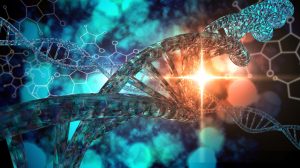Definition
noun
A slightly packed or partially condensed form of chromatin that contains structural genes and is usually transcriptionally active
euchromatic
adjective
Of, pertaining to, or characteristic of euchromatin
Supplement
The genetic material of the chromosomes is the chromatin. The chromatin is made up of DNA, protein, and RNA. There are two forms of chromatins in the interphase nucleus: euchromatin and heterochromatin. The only chromatin form found in prokaryotes is the euchromatin. The eukaryotes have both euchromatin and heterochromatin. This could mean that heterochromatin in eukaryotes became essential so that eukaryotes may be able to handle such a large genome size compared to that of prokaryotes.
Euchromatin is the genetically active region of the chromosome. It contains structural genes that are replicated during G1 and S phase of interphase by allowing polymerases to access the genes.1 It also allows RNA gene regulatory proteins and RNA polymerase complexes to access these genes to be transcribed into mRNA products. The euchromatic regions that are always accessible for transcription are those containing the housekeeping genes. These genes are essential for the basic function and survival of the cell.
G-banding technique enables visualization and distinction between euchromatic and heterochromatic regions of the chromosome. Euchromatin stains lightly whereas heterochromatin stains darkly. The lighter staining is due to their slightly packed structure of euchromatin.
Compare:
See also:
Reference(s):
1 Khan, R. (2010). A Textbook of Biotechnology Volume-I Genetics and Molecular Biology. Laxmi Publications. p. 11







